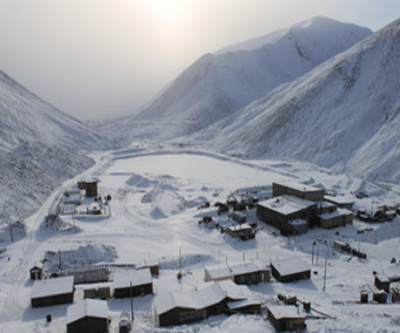Kinross shares soar ahead of results

Shares Toronto’s Kinross Gold Corporation (TSE:K) leaped on Wednesday ahead of its second quarter results that showed earnings and revenues beat estimates.
By the close Kinross was up 6.2% in New York and 7.3% in Toronto affording the Canadian company a market value of $2.7 billion on the TSX after reporting a 4.4% decline in revenue to $755 million that nevertheless came in above expectations.
Kinross reported a net loss of $83.2 million, or $0.07 per share, compared with earnings of $46.0 million, or $0.04 per share, in Q2 2014, while adjusted earnings beat estimates at $13.6 million or $0.01 per share.
Gold production fell to 661,000 ounces during the quarter, but the company said it is on track to end 2015 at the higher end of its guidance for the year of 2.4 – 2.6 million ounces.
Production cost of sales decreased to $724 per ounces, down from $742 in Q2 2014, but all-in sustaining cost climbed to $1,011 per ounce sold, compared with $976 in Q2 2014.
For the rest of the year Kinross predicts results will come in at the low end of guidance for production cost of sales ($720 – $780) and all-in sustaining cost ($1,000 – $1,100), and below total capital expenditure guidance ($725 million).
Kinross recently settled a number of class-action lawsuits tied to its disastrous purchase in 2010 of Red Bank Mining and its Tasiast mine in Mauritania for more than $7 billion.
In February Kinross announced its scrapping a $1.6 billion expansion at the mine and in the latest statements said it’s continuing its spending review with specific mention of Tasiast and in light of an agreement reached in July to extend its debt profile and amend its debt covenant.
Net debt stands at $960.2 million with $250 million in senior notes due in 2016 and the only significant debt maturity until 2019 according to the company.
J. Paul Rollinson, CEO, said the company achieved these results “despite a temporary suspension of operations at Maricunga and fewer ounces sold due to timing of some gold sales, which, together with a decline in the gold price, impacted earnings.
“Kinross nonetheless continued to generate free cash flow in Q2, in large part as a result of its strong operational performance, benefits from foreign exchange and lower oil prices, and a company-wide effort to drive down procurement costs and reduce working capital.
“With strong liquidity, including more than $1 billion in cash on the balance sheet, Kinross is well-positioned to weather the current market volatility,” said Rollinson.
Based on last year’s numbers Kinross is the world’s fifth largest gold producer in terms of output producing 2.71 million ounces of gold equivalent in 2014 with some 720,000 ounces coming from Russia.
{{ commodity.name }}
{{ post.title }}
{{ post.date }}




Comments